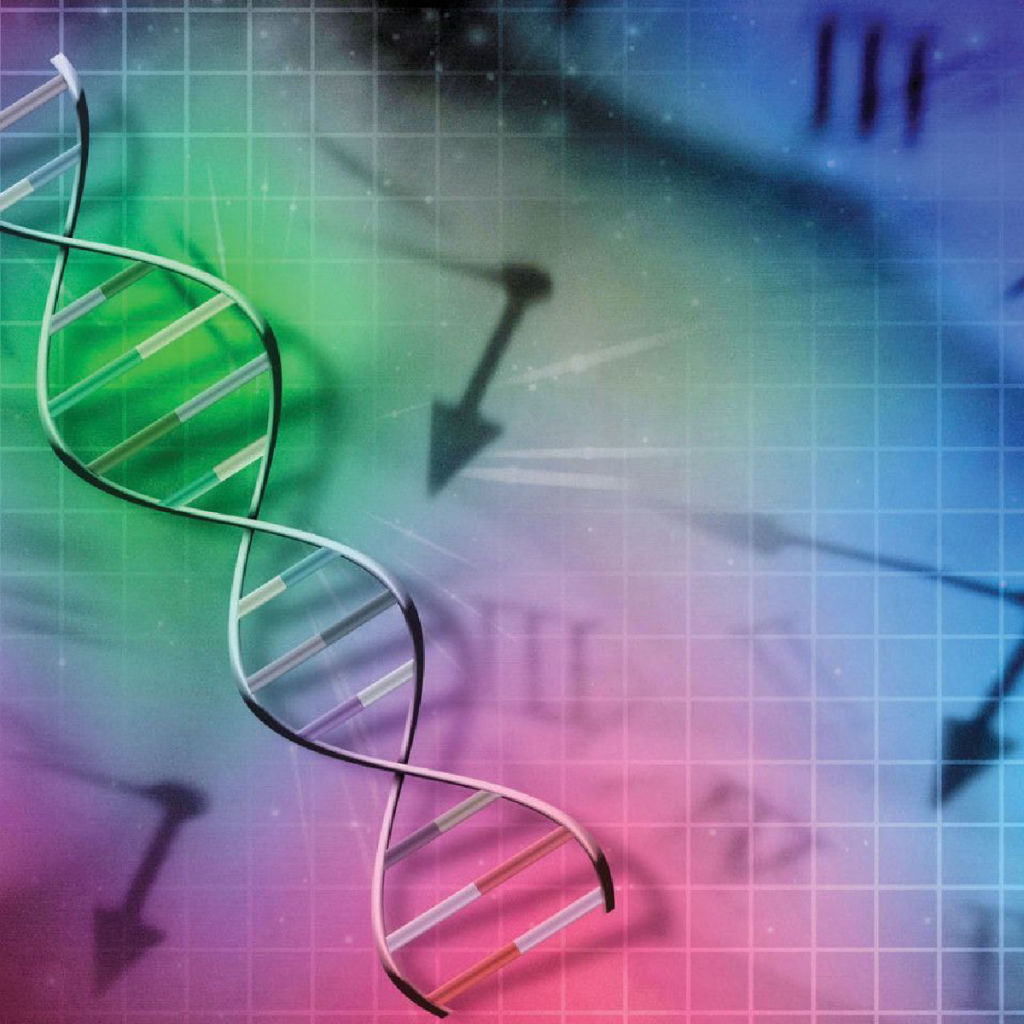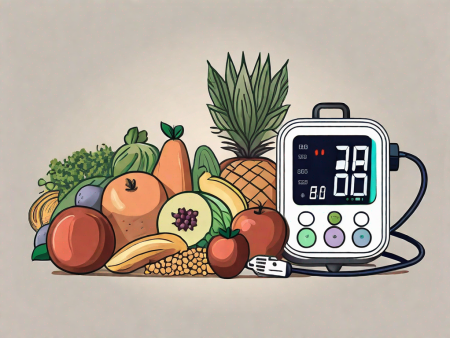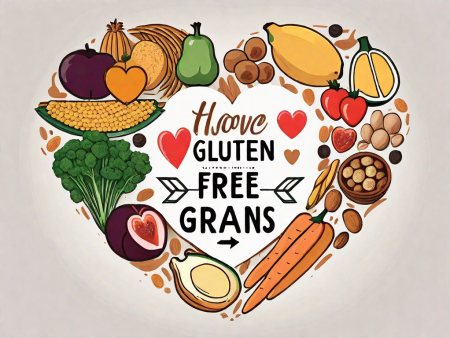Discover how genetics play a crucial role in determining an individual’s risk for chronic diseases.
Exploring the Role of Genetics in Chronic Disease Risk
Genetics is like a box of chocolates – you never know what you’re gonna get! But in the case of chronic diseases, your genetic makeup plays a starring role in determining your risk. In this article, we’re going to dig deep into the world of genetics and uncover its connection to chronic diseases. Strap on your lab coats and let’s get started!

Understanding the Basics of Genetics
Genetics is the study of our DNA, the blueprint that makes us who we are. At the heart of it all are genes – the superheroes that carry the instructions for our traits and characteristics. Genes are like multitasking architects, responsible for everything from our eye color to our risk of chronic diseases.
These amazing little things are made up of DNA, which is like a twisted ladder, with rungs made of nitrogenous bases. Just like each book has chapters, genes have sections called exons and introns, which contain all the juicy information needed for our bodies to function.
But let’s dive deeper into the structure and function of genes. Genes have an extraordinary knack for multitasking. They code for proteins that perform all sorts of functions in our bodies, from breaking down food to repairing damaged cells. Think of genes as the ultimate maestros, orchestrating the symphony of life within us.
So, how do genes do their thing? Well, it all starts when a gene is transcribed into a molecule called mRNA. This mRNA then travels to the cellular factories known as ribosomes, where it serves as a blueprint for building proteins. It’s like a recipe coming to life!
Now, let’s talk about genetic variation – the spice of life! Just like no two snowflakes are identical, no two people have the exact same genetic makeup. This variation is what makes us unique, giving us different eye colors, hair types, and even susceptibility to diseases.
While genetic variation can be pretty darn cool, it can also come with its downsides. Certain variations can increase our risk of developing chronic diseases. But fear not! It’s not all doom and gloom. Genetic variation also means that some lucky folks may have a lower risk of certain diseases. It’s like winning the genetic lottery!
But wait, there’s more to genetics than meets the eye. Did you know that genes can interact with each other? It’s like a complex dance, where one gene’s actions can influence the behavior of another gene. These interactions can have profound effects on our traits and health.
And here’s another fascinating tidbit: genes can also be influenced by our environment. Yes, you heard that right! The choices we make, the foods we eat, and even the air we breathe can impact how our genes function. It’s a delicate interplay between nature and nurture.
Now, let’s take a closer look at how genetic disorders come into play. Sometimes, genes can have mutations or changes that disrupt their normal function. These mutations can lead to genetic disorders, such as cystic fibrosis or Huntington’s disease. Understanding these disorders can help scientists develop better treatments and therapies.
But genetics isn’t just about diseases and disorders. It also plays a crucial role in fields like agriculture and forensics. In agriculture, scientists use genetic engineering to create crops that are resistant to pests or have enhanced nutritional value. In forensics, DNA analysis is used to solve crimes and identify individuals.
So, you see, genetics is a vast and fascinating field that holds the key to understanding who we are and how we function. From the intricate structure of genes to the intricate dance of genetic interactions, there’s always something new to discover. The more we unravel the mysteries of genetics, the better equipped we’ll be to improve human health and unlock the secrets of life itself.
The Connection Between Genetics and Chronic Diseases
Picture this: genetics and chronic diseases locked in an eternal dance, each influencing the other. It’s a complicated relationship, my friend. Let’s unravel the mystery together, shall we?
When it comes to the connection between genetics and chronic diseases, there is a fascinating interplay at work. Our genes, those tiny units of heredity, can act as little troublemakers, putting their devious plots into action and increasing our risk of chronic diseases. These troublemaking genes can affect things like our body’s ability to process fats or sugars, making us prone to conditions like heart disease or diabetes.
However, it’s important to note that genes don’t hold all the power. Our lifestyle choices, like what we eat or whether we get off the couch, can also impact disease risk. It’s like a genetic tug-of-war, with our choices and genes battling it out for control. Time to channel our inner warriors and make the right choices!
How Genetic Factors Influence Disease Risk
Genetic factors play a significant role in determining our susceptibility to chronic diseases. For example, certain gene variations can affect the way our bodies metabolize cholesterol, leading to an increased risk of developing heart disease. Similarly, variations in genes involved in insulin production and glucose regulation can influence our likelihood of developing diabetes.
But it doesn’t stop there. Genetic factors can also impact our risk of developing conditions like cancer. Certain gene mutations can make our cells more susceptible to abnormal growth and division, increasing the chances of tumor formation. Understanding these genetic influences is crucial in identifying individuals who may be at higher risk and implementing preventive measures.
While genetic factors provide valuable insights into disease risk, it’s essential to remember that they are not the sole determinants. Lifestyle choices, such as maintaining a healthy diet, engaging in regular physical activity, and avoiding tobacco and excessive alcohol consumption, can significantly mitigate the impact of genetic predispositions.
Common Chronic Diseases Linked to Genetic Factors
Genes have a way of meddling in our affairs, and chronic diseases are no exception. Some of the biggest troublemakers are heart disease, diabetes, and cancer. These diseases have both genetic and environmental factors at play, like a chaotic dance party where the genes and the environment are the DJ duo.
Heart disease, for instance, can have a strong genetic component. Certain gene variations can affect blood pressure regulation, cholesterol metabolism, and blood clotting, all of which contribute to the development of cardiovascular problems. However, it’s important to note that lifestyle factors, such as a sedentary lifestyle, poor dietary choices, and smoking, can exacerbate the genetic predisposition.
Similarly, diabetes is influenced by a complex interplay between genetic and environmental factors. Genetic variations can impact insulin production, glucose regulation, and pancreatic function, increasing the risk of developing both type 1 and type 2 diabetes. However, maintaining a healthy weight, following a balanced diet, and engaging in regular physical activity can help manage the disease and reduce its impact.
Cancer, often considered a multifactorial disease, can also have a genetic component. Certain inherited gene mutations, such as BRCA1 and BRCA2, are associated with an increased risk of breast and ovarian cancer. However, it’s important to remember that genetics alone do not determine cancer risk. Environmental factors, such as exposure to carcinogens and lifestyle choices, can significantly influence the development and progression of the disease.
But fear not, my friend. Just because you have genes linked to these diseases doesn’t mean you’re doomed. Remember, your lifestyle choices can tip the scales in your favor and help you dodge these genetic grenades. By making informed decisions about your diet, exercise routine, and overall well-being, you can take control of your health and reduce the impact of genetic predispositions.
The Role of Environment in Genetic Expression
Genetics may load the gun, but it’s the environment that pulls the trigger. Our genes interact with the world around us, and this grand interaction can determine whether we end up facing chronic diseases or living our best, healthiest lives.
Gene-Environment Interactions and Disease Risk
Genes and environment are like two peas in a pod, constantly interacting and influencing each other. Sometimes, the environment can amplify the effects of our genes, increasing our risk of chronic diseases. It’s like a mythical sword – only deadly when wielded by the wrong hands.
But here’s the good news: our environment isn’t the bad guy in this story. With the right choices and a dash of luck, we can create an environment that boosts our well-being and keeps those chronic diseases at bay.
Epigenetics: When Environment Alters Genetic Expression
Just when you thought genetics couldn’t get any more mind-boggling, along comes epigenetics. This field of study explores how our environment can leave molecular marks on our genes, effectively turning them on or off. It’s like your genes attending a fancy masquerade ball – the masks they wear determine whether they cause mischief or behave like saints.
Our lifestyle choices, exposure to toxins, and even stress can leave these marks on our genes. So, it’s like a dance between our genes and the environment, with endless possibilities for health and disease. Time to put on our dancing shoes and create a rhythm of wellness!
Genetic Testing and Disease Prediction
Alright, it’s time to enter the realm of genetic testing – a crystal ball of sorts that allows us to glimpse into our future. But before we get too carried away, let’s explore the ins and outs of this fascinating field.
The Process and Purpose of Genetic Testing
Genetic testing is like peering into the secret code of life. By analyzing our DNA, scientists can uncover potential genetic variations or mutations that may increase our risk of chronic diseases. It’s like a sneak peek into our genetic crystal ball, showing us a glimpse of what may lie ahead.
But genetic testing isn’t just for fortune-telling. It can also help us make informed decisions about our health, whether that’s adopting a healthier lifestyle or seeking preventive measures. It’s like having a map to navigate the twists and turns of our genetic destiny.
The Limitations and Ethical Considerations of Predictive Genetic Testing
Genetic testing may hold promise, but it’s not without its limitations and ethical dilemmas. Sometimes, the results of genetic testing can be complex and open to interpretation, adding a layer of uncertainty to the crystal ball’s predictions. It’s like trying to read tea leaves – the signs can be hazy, leaving us with more questions than answers.
There are also ethical concerns surrounding genetic testing, like the potential for discrimination or the invasion of privacy. It’s like walking a tightrope, balancing the benefits and potential risks of this powerful tool. But with careful navigation and sound regulations, we can harness the potential of genetic testing for the greater good.
Future Directions in Genetic Research and Chronic Disease
The world of genetics is a frontier that’s constantly expanding, with new discoveries and breakthroughs on the horizon. Let’s peek into the crystal ball one last time and glimpse what the future holds.

Advances in Genomic Medicine
Genetic research is unlocking the secrets of our DNA, and it’s opening up new possibilities for personalized healthcare. With advances in genomic medicine, we can tailor treatments to individuals based on their unique genetic makeup. It’s like fitting a bespoke outfit that’s perfectly tailored to our needs.
This personalized approach holds the promise of more effective treatments and improved outcomes for chronic diseases. It’s like having a team of scientists working round the clock to crack the code of your health and wellness.
The Potential of Personalized Medicine Based on Genetics
Picture a world where your genetic information is used to create a roadmap for your health. Personalized medicine aims to do just that – leveraging our unique genetic blueprint to identify disease risks and develop targeted interventions. It’s like having a personal health coach guiding us on the path to optimal well-being.
But like any grand vision, there are challenges to overcome, from ensuring equity and accessibility to interpreting the vast amount of genetic data. It’s like unraveling a genetic mystery, one piece of the puzzle at a time. But with dedication and collaboration, personalized medicine based on genetics may become a reality for all.
So there you have it, my fellow genetic adventurers! We’ve explored the intricate dance between genetics and chronic diseases, and uncovered the secrets that lie within our DNA. From genes to environmental influences to the tantalizing promise of genetic testing, the world of genetics is a playground of discovery. So, let’s embrace the power of knowledge and use it to shape a healthier future!







I don’t think the title of your article matches the content lol. Just kidding, mainly because I had some doubts after reading the article.